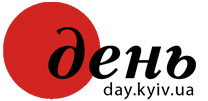The BBC (www.bbc.co.uk) reports that Trinity College, Cambridge, has put on public display the diary of Gareth Jones (1905—1935), a Welsh journalist who dared to say the truth about the Holodomor horrors that he saw in the spring of 1933. Not only a top-class professional but also an honest and humane person, a Cambridge graduate who had been publishing since 1930 his USSR reports in The Times of London as “An Observer’s Notes,” Gareth Jones decided later in 1932 to find by all means the root cause of the food situation in the Soviet Union, the truth about the famine in a huge country. Traveling by railway to Ukraine as a private individual, he got off the train on the Ukrainian soil, walked about 40 miles, spent two weeks on the apocalyptic famine-stricken territory, speaking to people and sleeping in their houses. He was gripped with the indescribable horror of what he saw.
On March 30, 1933, Manchester Guardian published Jones’s report on the horrors he had seen. “I walked alone through villages and twelve collective farms. Everywhere was the cry, ‘There is no bread; we are dying’...,” the journalist wrote.
The truth about the Great Famine which Gareth Jones, a well-known journalist in Europe, a reporter who interviewed Hitler and Mussolini, and mingled with British premiers, dared to tell the world will always remain in the history of the world press as a striking example of a high human morality, courage and professional ethics.
The public display of Gareth Jones’s diaries in London is really an outstanding event that has a direct bearing on Ukrainian journalism in general (the level of its maturity, responsibility and proficiency, all the more so in comparison with Jones, is a matter of a very serious talk) and the newspaper Den/The Day in particular. This deserves a few words. The bold exploit of Gareth Jones and the very name of his became known to Ukrainians (and not only to them – this also applies, in a way, to the US and Europe) thanks to the article “A Tale of Two Journalists” by James Mace, an unforgettable historian, political journalist, public figure, and an outstanding researcher of the Ukrainian Holodomor. First published in Den on July 16, 2003, it immediately became assigned reading. This article was repeatedly reprinted in Den/The Day and the books Day and Eternity of James Mace and Extract 150 of The Day Library series. This text also served as a basis for a special journalist course at Den/The Day’s partner universities and is manual of sorts for trainees at our Summer School of Journalism.
In “A Tale of Two Journalists,” Gareth Jones stands opposed to the New York Times journalist Walter Duranty who, in contrast to Jones, wrote articles which lulled the world community into complacency and made them shut their eyes to that-time horrors in Ukraine, for which he was awarded the Pulitzer Prize. Den/The Day wrote a letter, together with James Mace, to The New York Times with an urgent call to posthumously deprive Duranty of this prestigious journalistic prize. Unfortunately, we are still waiting for an answer.
Stanislav KULCHYTSKY, a well-known researcher of the 1932—1933 Holodomor problem; deputy director, Institute of the History of Ukraine, National Academy of Sciences, Ukraine:
“This is an extremely important event because Gareth Jones one of the few Western journalists who stayed here during the 1932—1933 famine and tried to put the truth across to the Western public. Unfortunately, by a horrible twist of fate, Jones was killed in rather a young age. I must say that we knew very well that this journalist published articles, but nobody knew about his diaries. So they are one of the few sources that are immensely important for studying the Holodomor’s history. Last year the Kyiv Mohyla Academy published two diaries of Ukrainian eyewitnesses as part of a large monograph on the Holodomor. I can say such documents provide a lot of information.”







